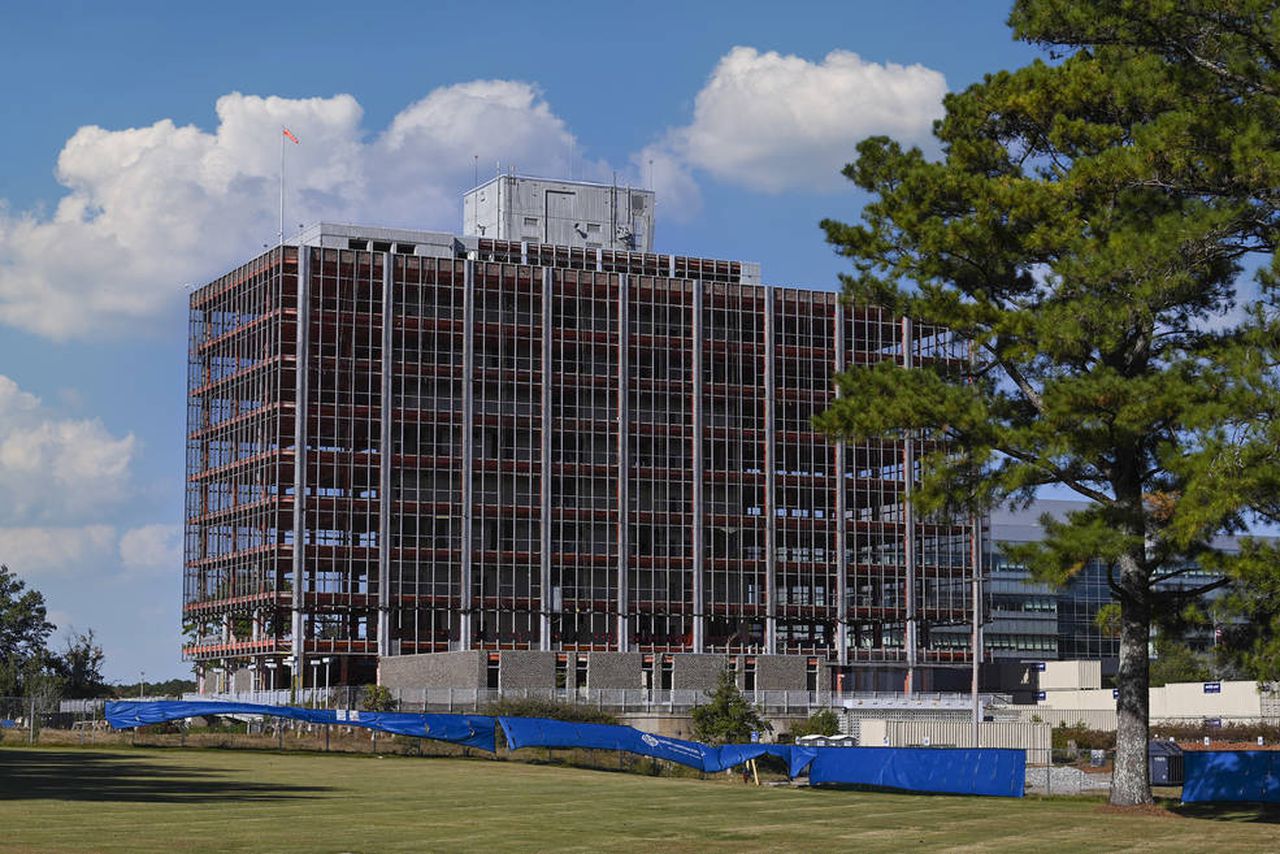Watch Von Braun NASA HQ in Huntsville come down
NASA is set this morning to demolish the 10-story former headquarters building where Wernher von Braun’s rocket team designed and managed the construction of the Saturn V rockets that took America to the moon.
Building 4200 on Redstone Arsenal will come down in a planned implosion at 7:30 a.m. Central Daylight Time “to make way for a series of new, state-of-the-art facilities tailored to help NASA map out the next century’s worth of discoveries in space,” writer Rick Smith said on the agency’s website. Smith, a Manufacturing Technical Solutions employee, supports Marshall’s Office of Strategic Analysis & Communications.
The NASA YouTube feed will go live at 7 a.m. featuring a graphic countdown. A few minutes before the implosion, the feed will add “chatter” from the demolition crew and a final countdown.
Fourteen directors including von Braun led Marshall from this building. America’s moon rockets and space shuttles, the James Webb Space Telescope and its predecessors and successors, and the International Space Station were all built, tested or managed by Marshall.
NASA has no planned gathering to watch the demolition, which a spokeswoman said should only take seconds due to earlier removal of most of its interior. The complex and surrounding parking lots are already closed and will remain closed until Nov. 1, NASA said.
The building was stripped to its beams for the demolition but had been full of 1960s-era offices and conference rooms – and asbestos. A common insulating material when 4200 was built, asbestos is toxic if disturbed and inhaled. NASA says entire floors would have needed to be shut down and sealed off for every improvement such as new computer cables.
“That decision tugs a lot of heartstrings here,” Smith said in the Marshall story. “The building was home to thousands of Marshall team members over much of six decades.”
Now, Marshall is putting new technology, energy saving materials and more open floor plans into a complex of modern buildings in the same general area. The vision is “a bustling, modern campus atmosphere, loosely centralized around the evolving 4200 complex and its counterpart to the south, the 4600 engineering complex,” Smith said. A greenway connecting the two will encourage walking from complex to complex.
“Buildings come down, but science and exploration continue onward,” Marshall Director Jody Singer said. “Marshall’s true legacy isn’t a glass and stone edifice, but the men and women who work within – the vanguard of future space frontier expansion for untold decades to come.”
Marshall’s historical preservation officer Scott Worley agreed in his own post. “If we had a choice between innovating an aging building or funding a bold new mission to the outer planets, we’d pick the mission every time,” Worley said.
As for von Braun’s legacy, items from his Marshall office and other memorabilia are displayed at the nearby U.S. Space & Rocket Center, which serves as Marshall’s official visitor center.
